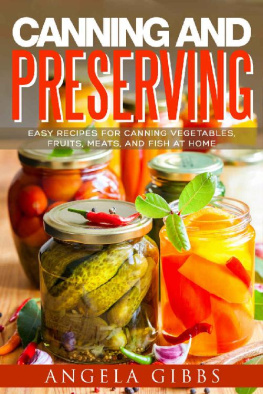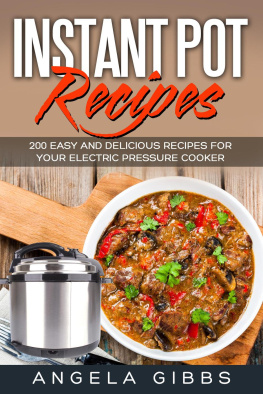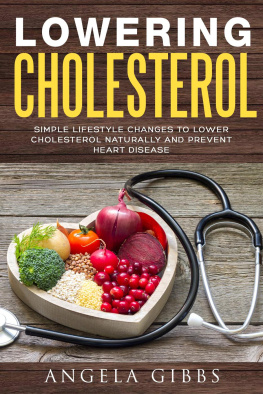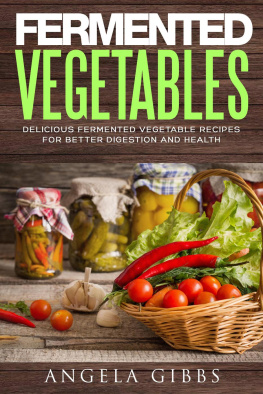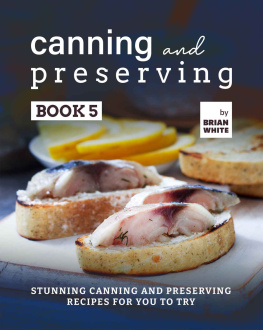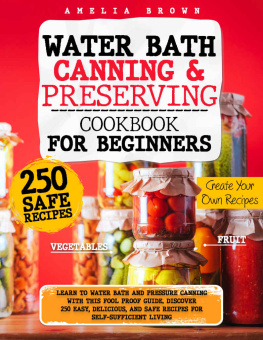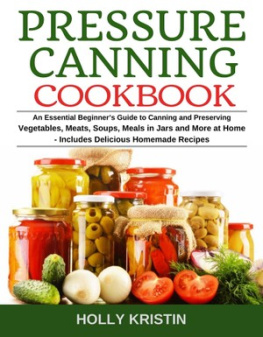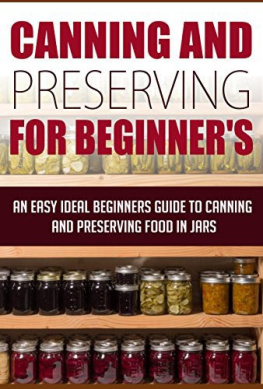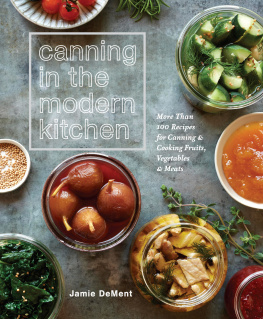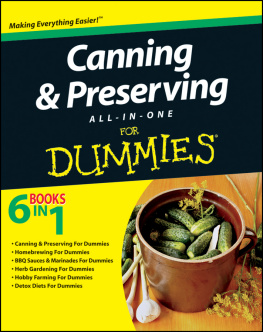Angela Gibbs - Canning and Preserving: Easy Recipes for Canning Vegetables, Fruits, Meats, and Fish at Home
Here you can read online Angela Gibbs - Canning and Preserving: Easy Recipes for Canning Vegetables, Fruits, Meats, and Fish at Home full text of the book (entire story) in english for free. Download pdf and epub, get meaning, cover and reviews about this ebook. year: 2018, publisher: Angela Gibbs, genre: Home and family. Description of the work, (preface) as well as reviews are available. Best literature library LitArk.com created for fans of good reading and offers a wide selection of genres:
Romance novel
Science fiction
Adventure
Detective
Science
History
Home and family
Prose
Art
Politics
Computer
Non-fiction
Religion
Business
Children
Humor
Choose a favorite category and find really read worthwhile books. Enjoy immersion in the world of imagination, feel the emotions of the characters or learn something new for yourself, make an fascinating discovery.
- Book:Canning and Preserving: Easy Recipes for Canning Vegetables, Fruits, Meats, and Fish at Home
- Author:
- Publisher:Angela Gibbs
- Genre:
- Year:2018
- Rating:4 / 5
- Favourites:Add to favourites
- Your mark:
Canning and Preserving: Easy Recipes for Canning Vegetables, Fruits, Meats, and Fish at Home: summary, description and annotation
We offer to read an annotation, description, summary or preface (depends on what the author of the book "Canning and Preserving: Easy Recipes for Canning Vegetables, Fruits, Meats, and Fish at Home" wrote himself). If you haven't found the necessary information about the book — write in the comments, we will try to find it.
If you are a gardener, or just love stockpiling ingredients, you should consider canning your own food. This fun hobby is a fantastic pastime for those who like to cook, as it allows you store up a bounty of delicious produce, meats, broth, and other foods to enjoy throughout the entire year.
Canning is a great way to improve your health and financial position. Store-bought canned goods tend to contain high levels of sodium, BPA, and other preservatives. You will also have minimal environmental impact when canning your own food, as you can reuse the jars instead of throwing them out, and it can save you tons of money in the process. Best yet, homemade canned goods make great gifts!
This book will make it easy for you to can and preserve food at home. By reading this book, youll learn:
The different methods of canning
The pieces of equipment youll need
A step-by-step guide to canning food at home
Canning tips for beginners
22 canning recipes, ranging from salsas and sauces to jams, pickles, meat, and fish
Whether youre trying to re-create the days of old or you simply want to enjoy healthy food from your own hands - canning is a new skill that youll love having.
Angela Gibbs: author's other books
Who wrote Canning and Preserving: Easy Recipes for Canning Vegetables, Fruits, Meats, and Fish at Home? Find out the surname, the name of the author of the book and a list of all author's works by series.

